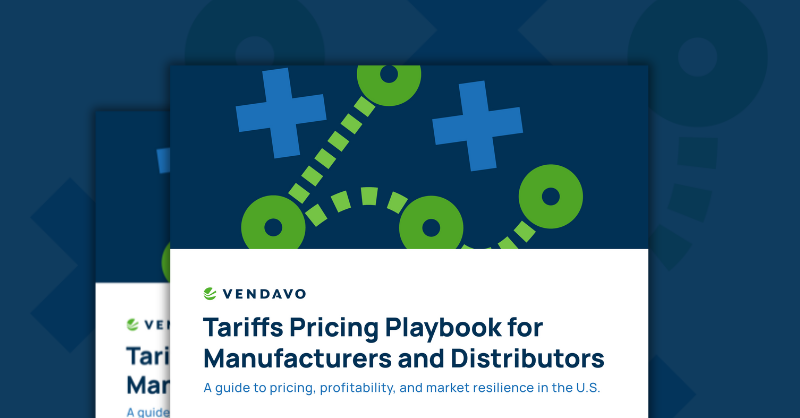Any effective rebate management system relies on the essential component of rebate processing, a set of procedures that translate how rebates work into strategic financial tools for businesses. This critical framework ensures proper tracking and accounting of rebates, representing a sequence of steps meticulously designed to protect profitability and compliance. Here we discuss the inner workings, best practices, and complexities of rebate processing and how these procedures serve as an integral lever in helping organizations remain competitive in a dynamic economic landscape.
What is Rebate Processing?
Rebate processing is the set of procedures employed throughout the execution of a rebate program, effectively fulfilling the terms of promotional offers and providing both vendors and customers with incentives. Rebate processing includes various stages, including the offer creation, purchase, rebate claims, validation and verification, approval and processing, payment or discount issuance, reporting and analysis, and customer communication.
In a technologically advanced era where efficiency equates to competitive advantage, leveraging technology in rebate processing has become non-negotiable. Many organizations use rebate management software to automate critical steps within rebate processing, thereby minimizing manual errors and streamlining operations from end to end. This not only enhances operational efficiency but also ensures that every transaction aligns with both accounting standards and promotional criteria—a balance crucial for maintaining trustworthiness among stakeholders and compliance among governing bodies.
Understanding rebates themselves highlights why meticulous processing is essential—they are strategic financial instruments employed by businesses aiming at cultivating brand loyalty and stimulating specific consumer behaviors post-purchase rather than upfront discounts at point-of-sale. Broadly categorized into vendor rebates (issued by suppliers) and customer rebates (directed towards consumers), these incentives necessitate a series of actions, ranging from submission handling, rigorous data entry for claim verification, and seamless communication throughout the rebate lifecycle until disbursement.
Rebate processing, often facilitated with the help of automated rebate management systems, handles these procedures to ensure an effective, transparent, and profitable rebate strategy.
How Does The Rebate Process Work?
Rebate processing is a structured set of procedures designed to ensure the seamless execution and tracking of rebate programs. Here’s a breakdown of its workflow:
- Submission and Validation: After purchasing a qualifying item, customers submit their proof of purchase. The issuing company then verifies these submissions against predefined criteria to validate the claim.
- Approval and Processing: Once validated, claims undergo approval. Successful approvals lead to processing where incentives are allocated—customers receive their rebates via checks, electronic transfers, or gift cards as promised.
- Communication: Maintaining open lines of communication with customers throughout this journey underscores transparency and bolsters satisfaction levels. Organizations should notify participants upon receipt of submission, any status changes thereof, and finally when the incentive has been dispatched.
- Rebate Management Systems: Utilizing automated systems facilitates efficient management by capturing supplier agreements in detail, monitoring relevant purchases against those agreements accurately managing financial accruals related to rebates while streamlining claim processes effectively.
- Customer Service: Proactive customer service plays an essential role in keeping participants informed about their rebate’s progress which not only elevates satisfaction but also nurtures ongoing brand loyalty.
- Incentive Fulfillment: Typically executed within a couple of weeks from claim submission, rebates are often fulfilled through either virtual or physical prepaid cards, among other incentives that align with modern consumer preferences for convenience and immediacy.
For rebate processing to be effective and frictionless, several best practices should be adhered to. Clear and achievable criteria for rebate eligibility are paramount, ensuring customers understand how to qualify. Transparent communication throughout the process helps manage expectations and builds trust. In addition to leveraging technology to improve efficiency and reduce processing errors, ongoing analysis and optimization of rebate programs is crucial to ensure they remain aligned with business goals while meeting customer and vendor needs.
Designing a Rebate Offer
Crafting a rebate offer involves a strategic process that aims to optimize customer engagement, drive sales, and enhance profitability. Here are the fundamental components and considerations that go into designing a rebate offer:
- Understanding Customer Behavior: Segment your audience by criteria such as trade class, buying habits, geographic location, or product preference. Analyze this data to customize rebates that resonate with distinct customer groups.
- Segmented Incentive Templates: Develop segmented incentives tailored to various customer goals, ensuring the rebate levels are attractive and motivating behaviors beneficial to your business’s strategies.
- Rebate Deal Pricing Strategies: Introduce different types of rebates like introductory offers and prices for new products, tiered rebates encouraging increased purchase volumes, or specific discounts on chosen product lines to stimulate purchasing activity and foster growth.
- Standardized Rebate Agreement Template: Employ a uniform template for all rebate agreements detailing critical aspects such as spend thresholds, payout tiers based on revenue qualifications, and adjustments for inflation—aiming for clarity across transactions.
- Review Process: Implement a comprehensive review protocol involving key stakeholders from sales through product management. This ensures strategic coherence across departments. Additionally, performing quarterly assessments of each program helps measure effectiveness against set goals.
- Incentivizing Team Alignment: Ensure team member rewards reflect the intentions behind your rebate strategies; preventing conflicts between sales efforts and commission structures.
- Automation and Technology: Adopt automated technologies and rebate management solutions to accurately calculate accruals, taking into account factors like sales volume, product types, customer segments, and geographical regions. Automation helps streamline the entire process by reducing manual tasks, minimizing errors, and improving efficiency in managing rebate programs.
By incorporating these elements into the design of rebate offers, organizations can effectively optimize their rebate programs to drive sales, foster loyalty, improve profitability, and maintain transparency in their operations.
Types of Rebate Offers
Designing impactful rebate offers requires a nuanced understanding of the various types of incentives that can effectively engage customers and boost sales figures. Below are some prevalent forms of rebate offers, each designed to meet distinct business objectives and customer needs:
- Volume Rebates: These rebates are calculated based on the volume of purchases, with tiers or bands that unlock higher rebate amounts as specific volume thresholds are reached. They come in two categories: retrospective (awarded after reaching set targets) and non-retrospective (defined conditions met within a purchase).
- Mix Incentives: Aimed at boosting sales for high-margin but lower-volume products by bundling them with more popular items, thus offering mutual benefits for both businesses and their customers through attractive package deals.
- Promotional Incentives: Designed to help clear excess inventory by providing rebates on additional units purchased, these incentives facilitate stock rotation while stimulating increased buying activity.
- Loyalty Incentives: Reward retailers for prioritizing the sale, stocking, and promotion of a company’s product line over others; such schemes cultivate brand loyalty while encouraging vendors to actively advocate for the products.
- Stock Cleanse Incentives: Targeted at moving older stock to make way for new arrivals by rewarding purchases made from outdated lines—thus ensuring continued sales momentum without sacrificing profit margins significantly.
- Stocking Incentives: Offer extra rebates when retailers agree to keep a certain level of stock available—ensuring better visibility and availability in retail environments which can drive up consumer interest.
- Logistics Rebates for Bulk Purchases: Encourage large-scale purchasing by providing discounts on bulk orders like whole pallets—capitalizing on economies of scale can be particularly appealing in global wholesale contexts.
- Special Pricing Agreements (SPAs): Facilitate bespoke pricing arrangements with selected distributors enhancing strategic partnerships without undermining broader channel management practices and pricing structures.
These types of rebate offers suit different business objectives. By strategically designing rebate offers that align with business goals and customer needs, organizations can effectively leverage rebates as a powerful tool to stimulate purchasing behavior and improve satisfaction among customers and partnering vendors.
How Rebates Get Processed
Rebate processing, in simple terms, is a systematic approach that ensures the accurate and timely delivery of rebates to customers. Here’s an overview of the key steps involved in this intricate process:
- Rebate Program Setup: This initial phase involves defining the structure, terms, and conditions of the rebate program. It includes setting up eligibility criteria, determining rebate levels, and establishing clear objectives for what the program aims to achieve.
- Rebate Deal Assignment for Customer: In this step, specific rebate deals are assigned to eligible customers based on predefined criteria such as purchase history or volume thresholds. This tailored approach ensures that incentives align with customer behavior and business goals.
- Sales Tracking and Accrual Generation: Ongoing sales transactions are monitored against each customer’s account to track progress toward meeting their respective deal requirements. Accruals are then generated based on these tracked sales figures—setting aside funds for anticipated rebate claims.
- Payment Processing: Once accrual benchmarks are met or exceeded by customer purchases, payment processing begins where verified rebates are disbursed through chosen methods whether it be checks electronic transfers, or other forms of digital payout ensuring recipients receive their earned incentives promptly.
- Analysis and Feedback: After rebate payments have been issued, a critical evaluation step is conducted by analyzing both quantitative and qualitative outcomes of the program. This analysis serves as feedback for refining future programs, ensuring that each iteration is more aligned with business objectives.
Rebate Processing Management Systems
Rebate processing management systems stand at the forefront of modernizing how businesses handle their rebate programs and processes. These automated platforms are designed to manage various aspects of a rebate’s lifecycle—from recording supplier agreements and tracking purchases to managing financial accruals and processing claims. By shifting away from manual methodologies, these systems significantly reduce human error while boosting overall efficiency, ensuring that both promotional offers and compliance requirements are met with precision.
The specific systems commonly involved in rebate processing are a dedicated rebate solution, a CRM solution, and an ERP solution. A dedicated rebate solution is used for rebate program and deal management as well as for managing accuracy and starting the payment process. An ERP solution is used to manage the financial side of the accruals and payments through cost bookings and credit note issuance. A CRM solution is used to have reference data on customers that is needed to handle everything correctly.
The capabilities embedded within these systems are expansive, especially when strategically combined in an organization’s rebate programs. They accommodate various pricing agreements, including ship and debit arrangements, retrospective tiered discounts, special pricing deals, growth-based rebates, and vendor rebates, among others. The automation extends to tracking sales transactions against established agreements seamlessly, handling accrual accounting automatically which simplifies invoice generation for suppliers.
Such rebate processing systems also provide tools for creating in-depth reports for forecasting potential market trends as well as features aimed at improving commercial negotiations. These features are all supported by a robust audit trail for unmatched reliability and ongoing compliance.
Best Practices for Getting the Most Out of Your Rebate Programs
To maximize the effectiveness and efficiency of your rebate programs, incorporating a set of best practices is paramount. Here are some key strategies to consider:
- Establish Clear Goals: Clearly defining your objectives for each rebate program is essential, as is establishing measurable metrics for success. Training your sales team thoroughly on these goals ensures everyone works towards the same outcomes.
- Considerations for Rebate Offers: Fine-tuning elements such as advertising reach, the value of rebates offered, attractive pricing thresholds (strike price), ease of redemption process, fostering consumer trust in the offer’s validity, and aligning utility margins with income expectations can profoundly influence activation rates and overall satisfaction.
- Transparency and Communication: Keeping all stakeholders informed through transparent communication channels is critical. Ensuring that data related to rebates—such as progress updates or payment histories—is readily accessible mitigates confusion and fosters trust among participants.
- Track Changes and Keep Records: Vigilantly tracking any amendments to rebate agreements while maintaining clear records detailing modifications—highlighting who made changes and when—serves as a safeguard against disputes facilitating smoother management operations throughout the lifecycle of a rebate program.
- Automate Your Process: Leverage automation via dedicated software solutions designed for managing rebates; this not only reduces manual labor but also curtails potential errors increasing operational efficiencies significantly Automation allows teams to focus more strategically on enhancing program offerings rather than being bogged down by administrative tasks.
- Optimize Rebate Management Solution: Embrace digital tools specifically designed for rebate management, which centralize financial tracking, simplify process execution, offer clear insight into rebate calculations, and automate routine tasks. This strategic investment can not only improve profit margins and save time but also elevate operational efficiency while minimizing the chances for error.
By weaving these best practices into your rebate management strategy, your organization will be well-poised to amplify buyer engagement The result? Enhanced customer loyalty, increased revenue streams, improved profitability—all culminating in the smooth and successful rollout of your rebate initiatives.
Benefits of Management Platform for Processing Rebates
Adopting a management platform for rebate processing can transform the efficiency, accuracy, and strategic decision-making capabilities within an organization. Here are some of the most valuable benefits to be had:
- Improved Efficiency: Rebate management platforms elevate process efficiency by offering advanced forecasting tools, scenario planning capabilities, and access to real-time data analytics. This optimization frees up valuable time for teams to engage in more strategic activities and informed business decision-making.
- Enhanced Collaboration: By centralizing information accessible to all relevant departments and stakeholders, digital solutions foster improved collaboration and seamless sharing of live data. This collective approach empowers teams to work cohesively towards common goals with enhanced productivity.
- Optimized Balance Between Automation and Human Input: The digitization of rebate processes strikes a perfect balance between automated systems and human oversight—maximizing outcomes while minimizing errors. Automation streamlines complex calculations, ensuring integration with existing systems to avoid redundant efforts, and significantly boosts operational efficiencies conducive to profit growth.
- Access to Relevant Data: Management platforms offer straightforward access to crucial data sets necessary for meeting audit requirements effortlessly. Such accessibility not only simplifies the auditing procedure but also reinforces compliance standards across operations.
- Strategic Decision-Making: Rebate management software equips businesses with the ability to leverage precise data insights analytics facilitating strategic decisions that drive sustainable growth and optimize financial workflows leading to substantial savings.
- Supplier Relationships: Efficient and accurate rebate processing, facilitated by management platforms, ensures businesses receive their entitled rebates promptly. This efficiency not only fosters trust but also strengthens collaboration with suppliers, leading to more robust and enduring partnerships.
By implementing a dedicated platform for managing rebates, organizations realize the potential to streamline workflows significantly, reduce the likelihood of errors, and foster collaborative teamwork while improving the quality of their decision-making.
Why Work With a Rebate Processing Company?
Navigating the complexities of rebate management requires a strategic approach that not only streamlines processes but also optimizes pricing strategies to maximize profitability and efficiency. Working with a specialized rebate processing company can significantly overcome these challenges, providing organizations with the expertise and tools necessary to manage intricate rebate programs effectively. Such partnerships enable businesses to focus on core operations while ensuring their rebate programs are handled accurately and efficiently, ultimately enhancing customer satisfaction and loyalty.
Vendavo stands out in this arena with its innovative solutions—Margin Bridge Analyzer and Rebate & Channel Manager products—designed specifically for optimizing pricing strategies and simplifying the intricacies of rebate processing. The Margin Bridge Analyzer allows companies to proactively design, manage, and execute complex pricing agreements across channels from a centralized platform, reducing risks associated with overpayments or underpayments. Likewise, Vendavo’s Rebate & Channel Manager automates the entire process from deal creation through payment generation, facilitating efficient program management that drives revenue growth across all channels.
By integrating these cutting-edge tools into their operations, businesses can achieve unparalleled efficiency in managing rebates while cultivating stronger relationships within their distribution networks—all leading towards sustained business growth bolstered by strategic price optimization.


